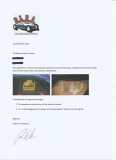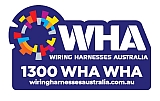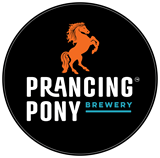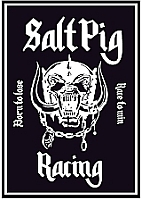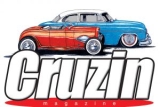Advice for Competitors
RACING RULES
The DLRA has its own rulebook, this book contains operating procedures, competition requirements, engine class breaks, technical requirements and classes. It is based on the rule book of the Southern California Timing Association.
You can download a copy of the current rulebook from the DLRA web site. Printed copies can be supplied by contacting our Secretary. There is also information on vehicle styles and classes and engine displacements breaks on the web site.
NOTE: If you are currently building a vehicle you would be wise to contact the Chief Inspector for advice what you will be required to do.
1. ENTRY
As an Entrant you must be a member of the Dry Lakers Racers Australia, you must also be a (active) Financial Member to compete (paid your annual subscription).
Inquiries about becoming a member, or paying your annual subscription are available on-line or should be directed to the Secretary.
You have to complete a Speed Week entry form, and pay the appropriate fees
There is a complete Online Booking system for entry forms, annual subscriptions and accommodation.
You must have had your vehicle inspected and passed scrutineering prior to competing. (This happens at the event)
You must display your entry number and class details on your vehicle. Please read Guidelines for Vehicle Numbering.
All Entrants must volunteer; Drivers, Riders or members of their team MUST nominate for at least one job during Speed Week. Details must be provided on the entry form for it to be accepted by the Event Committee. If you have not nominated a volunteer position your entry will be returned to you. For more information about the jobs required or to nominate for a job go to the Volunteers Register .
We also welcome anyone else who wishes to volunteer and help with the event, you do not even have to be a member.
1.1 Engine and Body Classes
When you fill out your entry form you will need to nominate the the engine capacity and body class that you will be competing in. For information about these classes go to for car and trucks page and for motorcycle page.
1.2 Fuel Register
You get to choose what type of fuel you will use in your vehicle and this must be nominated on your entry form. But this will also determine the class that you run in. Basically there are two fuel classes, GAS (pump fuel) and FUEL (all other types of fuel). For information about the types of fuel you can buy and the class of these fuels go to Fuels, Safety Data Sheets, Suppliers page.
See the Fuel Storage Register for more information about how to complete this part of the entry form.
Note: There are rules as to how you can store you fuel in the pits.
This information is also used by our fire and rescue crews in the event your vehicle catches fire on the course.
1.3 Roll Overs
If you have entered and know you cannot make it to the event, please notify the Secretary.
Of if you do not collect your entry pack from the Registration Caravan at the event,
your entry fee will automatically roll over to the following year.
But you will be required to complete new entry forms for that following year.
From 23 November 2022, all COVID-19 requirements under section 90C of the South Australian Public Health Act will be lifted.
There are important things we can all continue to do to protect ourselves and others from COVID-19 and other respiratory diseases:
- Stay at home if you’re sick
- Get tested if you have COVID-19 symptoms
- Follow the SA Health advice if you test positive to COVID-19 or are a close contact
- Stay up to date with your COVID-19 vaccinations
- Practice good hand hygiene
- Wear a mask in crowded indoor places especially when there are higher case numbers
- Consider doing rapid antigen tests before visiting people at higher risk of severe illness
- Spend time in well ventilated indoor areas or outside in the fresh air.
2. ARM BANDS
Entrant and crew arm bands are included in the entry pack you pick up from the registration caravan.
All entrants and crew members must wear their armbands in order to be permitted on any part of the competition area, including the track, pre-stage and start line areas or the return roads.
3. TECHNICAL INSPECTION
3.1 Prior to Speed Week
There are technical representatives in each State who are capable of conducting mechanical or safety inspections or to advise on vehicle construction. Please contact the Chief Inspector who will make the necessary arrangements or check the contacts page for a full list.
We have been receiving a number of inquiry's from interested parties who want to use an existing race car and are requesting information as to what class their vehicle would be suitable for. Please refer these inquiry's providing details and if possible photos direct to the Chief Inspector. In the end it is the owners responsibility to nominate which class and engine break they wish to compete in.
The DLRA is now recommending for all cars that are capable of 175mph and higher to supply a weight chart when presenting for vehicle inspection, this is the weight over each wheel. This will be used to help entrants to present a well balanced and safer at speed vehicle. Optionally entrants can choose to determine their vehicles Centre of Gravity and Centre of Pressure. Please take the time to read this document which explains it all.- Race Car Engineering
3.2 At Speed Week
Once you are set up in your pit, you need to go to Registration and pick up your entry pack, which will contain your technical inspection sheet. Then take your vehicle, your support vehicle, all your personal safety gear and all your paper work to Tecnical Inspection. Drivers will be required to perform a bail out at that time.
4. TENDER VEHICLE
All car and motorcycle Entrants require a push / support / recovery vehicle which MUST be fitted with a UHF radio tuned to channel 10 a 2.5KG Fire Extinguisher, a flashing light, first aid kit, drop sheets for the entrant vehicle and the tender vehicle and a spill kit.
A team of at least one person is to act as support for each entrant should they get into difficulties. Tender vehicles and teams can be shared between Entrants.
The tender vehicle must be presented for inspection and compliance at the same time as the entrants vehicle at technical inspection.
The entry pack envelope has the entrants number printed on the outside, this must be displayed in the windscreen of the tender vehicle to be permitted into competition areas.
Entrants cars can be pushed or towed with a rope or loaded onto a trailer.
Entrants motorcycles are not to be pushed or towed with a rope, they can be loaded onto a trailer or a hitch fitted to a tow bar.
5. EQUIPMENT EXEMPTION
If in the past you have applied for an exemption or deviation like the one below, you MUST re-apply for a current exemption, last years letter will NOT be accepted.
Send application to
Chief Car Tech, at
,a copy of an approval will be sent to you. You must print it and present it with your log book at inspection.
Bob Ellis
DLRA Chief Car Inspector.
6. COURSES
There are two tracks prepared for Speed Week.
- Track 1 - This track is 9 miles in total length. Usually 2 mile of run-up [1-2]. Then 3 timed miles [3-5] and 4 miles of slow-down [5-9]. There are timing beams at the 2 mile, 2¼ mile, 3 mile, 4 mile and 5 mile.
There are 2 options on Track 1.- Option 1 - Track 1, Short Course - Vehicles capable of speeds up to 175MPH are restricted to what is called the short course and can run at full power to the 2¼ mile. They must then turn out off the course after 3 mile or 4 mile if required. An entrant can nominate to continue on full power to 3, 4 or 5 mile if their vehicle requires the additional space, but must inform the starter of their intentions, who will relay this information to the timer before they leave the Start Line
- Option 2 - Track 1, Long Course - Vehicles capable of speeds over 175MPH can run what is called the long course and have the option to run under full power all the way from the 2 mile to the 5th mile. Entrants must inform the starter of their intentions, who will relay this information to the timer before they leave the Start Line After the 5th mile vehicles have turn outs at the 6th, 7th, 8th and 9th miles
- Track 2 - This track is 4 miles in total length. 2 mile of run up, 1 mile timed and 1 mile of slow down. There are timing beams at the 2 mile and 3 mile. Cars are restricted to 150MPH and motorcycles are restricted to a maximum speed of 175MPH on track 2.
It is an entrants obligation to attempt to clear the track as soon as practical, so as to allow the next vehicle to run. It should be noted that either course can change at anytime depending upon course and/or equipment conditions. Entrants will be notified at a briefing prior to commencement of the next session.
Check out the Track Layout map and become familiar with it.
7. TIMING SLIPS
Print-outs from the timing system for track1 and track 2 will be available from Race Control (the yellow bus).
8. RECORDS
A DLRA Australian record is defined as the average of a qualifying run and a record attempt over the same mile.
The mile used does not have to be nominated prior to the record run and the entrant can use the fastest of any two speeds over the same mile.
Current record speeds shown in the car and motorcycle registries.
All certified records are collated and new records are determined after the close of Speed Week.
9. IMPOUND
The impound area is used to identify and isolate vehicles that have qualified for a record attempt.
If you have exceeded the speed of the current record for your class and you want to attempt the break the record, you must present directly to impound, see below.
9.1 First presentation (qualification)
When an entrant has gone faster than an existing or open record, to qualify for a record run, they must obtain their timing slip from Race Control and report to the Impound Officer within 30 minutes of that run or as soon as practicable. They are NOT to return to their pit, if they do for any reason their attempt will be disqualified.
The Impound Officer will record the timing slip details into the Impound log and check the speed against the existing record, to ensure that the vehicle does actually qualify to set a new record.
A Technical Inspector will then take a fuel sample (if competing in a GAS class) and seals may be placed on the motor.
The entrant and his crew will have a maximum of 4 hours to service their vehicle at which time they must leave the impound area.
The entrant will be issued with a copy of their Impound Log Sheet which contains all relevant details.
The vehicle remains in the impound area. It is the responsibility of the entrant to provide drop sheets and covers for the vehicle whilst it is in Impound.
The following morning the entrant reports to the Impound Officer with their copy of the Impound Log Sheet to retrieve their vehicle.
At the appropriate time, usually first thing in the morning, all qualified vehicles in Impound are escorted direct to the Start Line to make their record attempt.
9.2 Second presentation (record certification)
Only if the entrant exceeds the record a second time does the Entrant obtain their timing slip from Race Control and return to Impound with their Impound Log Sheet.
The Impound Officer will record the timing slip details onto the Impound Log sheet and calculate average of the speeds attained, and check that it has exceeded the existing record.
The Technical Inspector will then measure and certify engine capacity. And check compliance with the class entered.
For GAS class vehicles a second fuel sample will be taken and tested.
If all criteria above are successfully met, the Impound Officer will certify a record into the Impound log.
The only exception to this Impound rule is an option for teams where a vehicle is being used by multiple entrants. Under these circumstances, the vehicle must present at Impound, be checked that they have qualified for a record attempt, under go whatever servicing is required and then will be released to run again.
Proof of multiple entrants on the same vehicle must be provided.
10. ROOKIE ORIENTATION BOOKLET
For first time entrants at Speed Week there is a lot to take in and remember. The Rookie Orientation Booklet contains excellent information on subjects like; Safety Equipment, Rookie Orientation Meetings, Long and Short Course Descriptions, Crew preparation, Things That Can Go Wrong and Record Runs.
Its definitely recommended reading for all new entrants and a great refresher for all competitors and officials.
11. DRUG & ALCOHOL TESTING OF BOTH OFFICIALS & PARTICIPANTS
The committee has resolved to take this action in awareness that should a serious accident or other incident occur during the event, involving persons affected by drugs or alcohol, it would certainly jeopardize the future of the event & most likely this form of motor sport in Australia.
Our committee wish to safeguard all individuals involved in this unique sport whilst ensuring that they are not placing themselves or others at risk of litigation should the unforeseen occur. With this in mind we believe that testing of all involved is a responsible precautionary action.
For an individual registering a positive reading they will be required to return to the pits area and not be permitted to compete/participate until a negative reading is returned or adequate time has past.
For more information on DLRA policy and procedures; Illicit Drugs.
Any Entrant or Official may be tested for the presence of drugs (or other banned substances) and subject to a penalty(ies) for a breach in accordance with the DLRA Anti-Doping Policy and/or the DLRA Illicit Drugs in Sport (Safety Testing) Policy as published on the DLRA website. Consumption of alcohol by entrants or Officials in the pits or any section of the competition venue/course under the control of the Officials is forbidden until all competition is concluded each day. Accordingly, any entrant or official may also be tested for the presence of alcohol by a DLRA Accredited Testing Official in accordance with the DLRA Standard Operating Procedure for Breath Alcohol Testing.
12. OPERATIONAL PLAN
The Operational Plan describes the requirements to conduct the annual Speed Week held at Lake Gairdner in South Australia by the Dry Lake Racers Australia.
All motoring events have an element of public risk and potential for environmental impact. The Operational Plan has been compiled with due consideration to reduce these risks and to prescribe the tasks required to conduct a safe and enjoyable event for participants and spectators.
13. CLUB RULES
There are a number of Club Rules and guidelines which competitors and their crews must follow whilst on the salt. Most of these relate to environmental issues. Breaking or ignoring these rules will may see you paying for any restoration work required, depending upon the willfulness and severity you may be removed from the event. As an organisation, we are only allowed access to this unique location whilst we demonstrate care and respect for it.
14. ROAD RULES AND SPEED LIMITS ON THE SALT
The salt is a National Park, all South Australian Road Rules apply. Seat belts must be worn in cars and helmets worn on bikes. All vehicles, other then competing vehicles, must be registered or have an appropriate permit. No riding on tailgates or in the back of utes. On all roads keep to the left.
The last 35 kilometres in to the lake (from the DLRA sign) is a Private Road on a pastoral lease, and as such your vehicle insurance may not cover you or your vehicle in the event of an incident, please check your policy. Same goes for hire cars.
On the mats from the edge of the lake. 10kph maximum.
Access roads from the edge of the lake to the start line or to the pits 60kph maximum
In the pits, walking pace only.
Track 1 dedicated support vehicle track from the Start Line to the return road, 100kph maximum (60kph past the pits)
Track 1 return road restricted to entrants vehicles and support vehicles 100kph maximum.
See Track Layout Map.
Failure to comply may result in expulsion from the event.
15. DRIVING ON THE LAKE & PARKING
Entrants and their crew are permitted to drive their vehicles onto the lake. However they must dust their vehicles off prior to entering the lake and must desalt upon leaving the lake. Whilst on the lake you will be under the direction of officials at all time. Please stick to defined access roads and observe the 60kph speed limit.
Officials will be monitoring the access road constantly and may re-align the road as required. If the salt under the access road begins to deteriorate spectators vehicles may be banned from entering the lake.
Entrants and their crew are free to park in the Pit area as defined in the track layout and the program. Do not park in front of another entrants pit or where it will cause an obstruction.
NOTE: All vehicles must be parked on a tarpaulin to protect the salt from fluids dropping from vehicle. This is a fundamental requirement of our agreements with the Lake Gairdner Co-Management Board and the Department of Environment and Water. Failure to do so will result in the vehicle being expelled from the salt. If the vehicle owner can't be found for a vehicle, it will be removed for you.
Please obey all signs.
16. ALCOHOL
Alcohol is permitted on the salt in cans only, do not bring glass onto the lake in any shape or form. It's best to enjoy your favorite beverage within the designated Spectator Areas, if you can refrain from bringing alcohol into the pits, that would be appreciated. Alcohol is strictly banned from the Technical Inspection area and the Start Line.
The lake is a public place, South Australian Road Rules apply, if the police catch you driving with a blood alcohol content over 0.05 is a $600 fine, over 0.08 and it's straight to court.
17. RESCUE AND MEDICAL ATTENTION
The DLRA has doctors and an ambulance on duty for the full duration of Speed Week. We also have a sizable number of fire and rescue crew and vehicles. If you require their services contact your nearest DLRA official and they will call them for you or direct you where to go. There is a medical services located in the pits. In the event of a emergency medical evacuation it is highly recommended that you have medical insurance, even though Flying Doctor Services are free.
18. SAFETY AND SECURITY
Once you have set up your pit you are at liberty to leave what ever you want there. So long as you have tarps under any vehicles and fuel etc. contained in bunds. However we strongly advise do not leave small items out in the open at any time day or night. Better to keep your tools and equipment under lock and key. Same goes for your vehicles, especially if they are unattended for any length of time. Over the years, there has been the occasional opportunistic theft, but thankfully these are rare. Better to be safe than sorry.
If you are away from your pit during the day, make arrangements with your neighbour to keep an eye on things. The pits are open to the public during the day and the lake is open from 7.00 am to 7.00 pm each day. There is a DLRA security team on the salt each night that patrols the pits and the lake.
Any shade structures that you have must have the covers lowered or removed each night as it gets very windy and they will quite easily blow away or be destroyed or potentially damage your vehicle.
19. CATERING AND PROVISIONS
Your last chance to stock up on provisions is at Port Augusta. Prices are reasonable so there is really no need to drag it all the way from home when you can load up on the way.
Coming from the West your last chance to stock up will be Wudinna or Kimba depending upon which road you take in.
There is a canteen on the edge of the lake operating for most of the time we are there, you can buy cold drinks, beer, and all your meals there if you wish. They sell cooked breakfast, lunch and dinners, sandwiches etc.. Prices are very reasonable and the dinners very generous. To see the menu go to the catering page.
If you are not buying from the canteen you will need to provide all your own food and drink. Bring more than what you will think you need in case you get stuck out there for whatever reason.
For those that are staying at the DLRA camp there is a free to use large cool-room for you to store perishables. Salt Bush camp, you're on your own.
20. DEW FIRE BANS
- You cannot light a wood fire in parks during the Fire Danger Season (November to March). Some parks have year-round bans on wood fires.
- All open fires, liquid fuel and gas stoves are banned in all parks on Total Fire Ban days as declared by the Country Fire Service (CFS) and broadcast on the radio. Parks may be closed to visitors on Total Fire Ban days. Contact the CFS Bushfire Information Hot-line on 1300 362 361
21. FIRE RESTRICTIONS
- DEW imposes fire restrictions to ensure the safety of visitors using the reserves, and to protect the reserves and neighboring properties. This includes the Mt. Ive Station camp and the DLRA camp.
- For information on fire restrictions in National Parks, Wildlife Reserves and Wilderness Protection Areas contact DEW.
22. WATER
There is water in the tanks at the Salt Bush camp and the DLRA camp it is not suitable for drinking.
You are strongly advised to bring your own drinking water
We have a contractor who sells ice by the bag or the block, and considering where you are it is quite reasonably priced. He has a route around the pits and the camps morning and night. He will be there from the Saturday before Speed Week until the Friday we pack up.
23. RUBBISH
The rule is very simple, EVERYTHING YOU BRING IN, YOU TAKE OUT. There are bins for recyclable containers ONLY (cans, PET bottles) at the canteen or you can bag them up at your camp site and someone come around and collect them.
There are NO bins for you to dump rubbish in at the salt. Bring some nice thick garbage bags and take it back to Port Augusta.
24. FUEL
Your last stop for fuel is Port Augusta, so take the opportunity to fill up then. There is no service stations on the Eyre Highway between Port Augusta and Iron Knob where you turn off on to the dirt. So you will need enough fuel on board to make the 432km return trip out to the salt and back plus what ever traveling you do while your out there. You can buy petrol and diesel (no LPG) at the Mt. Ive Homestead which you will pass on your way in and out.
Coming from the West your last fuel will be Wudinna (340km return) or Kimba (256km return) depending upon the route you have taken.
25. MONEY
Life at the lake is a cash only society. Bring plenty. But you will only need it if you want to buy something.
There are no EFTPOS facilities at Lake Gairdner, nor at the canteen or registration. But there is EFTPOS at Mt. Ive homestead but no cash back.
There area number of banks in Port Augusta, Wudinna and Kimba.
26. COMMUNICATIONS and the INTERNET
Due to the remote location there is no fixed land line, mobile coverage or internet.
If this is something you require your only option is a satellite phone, modem or hot spot.
The DLRA will not be making these forms of communication available to you, this is something you will need to organise and pay for yourself. We do have a satellite phone which is used for emergency communication only. We can recommend devices and networks that you could buy or hire equipment from.
There is one fixed line phone at the DLRA camp, the next closest phone is at Mt. Ive Station.
Mobile phone reception finishes very shortly after you turn on to the dirt at Iron Knob.
27. BEAT THE HEAT
It will be hot, very hot and you will be walking around during the hottest part of the day. Bring appropriate clothing and a wide brimmed hat, sun glasses and plenty sunscreen. The salt is a very reflective surface, think about it and apply sunscreen to all those place that normally don't get burnt.
Entrants are strongly advised to bring a shade structure to cover their pit area, however all structures must be disassembled at the end of each day as there is usually very strong winds throughout the night.
Please read this information about avoiding Dehydration and recognising Heat Exhaustion or Heat Stroke.
28. ACCOMODATION
28.1 Accommodation AT LAKE GAIRDNER DURING SPEED WEEK
You have 3 options;
- Mt. Ive homestead has a number of limited rooms, and most of this is booked from one year to the next. There are some shearers rooms available with dormitory style sleeping, but be quick and book ASAP. There is also a camping area at the homestead, tents and caravans are welcome, but you are in the outback so be prepared. Power, water (drinking), food and fuel, you have to be self sufficient, there is some power and showers. The homestead is some 18 km's from the lake. For bookings, contact Mt. Ive homestead direct.
- The DLRA camp is where competitors and their teams and regular visitors have purchased beds in semi-permenant structures. For Spectators there are plenty of un-powered sites, with toilets and showers available . The camp is about 6 km's from the lake. Camping fees can be paid online, at the registration van in the pits or at the lake entry vehicle check point at lake during Speed Week, once paid you will collect your wrist band which must be worn at all times.
- The Mt. Ive camp; located behind the canteen and very close to the lake. All persons intending to use the bush camp at Lake Gairdner are required to take Porta Potties for personal use - human waste is not to be left in the bush. No camp fires are permitted to be lit near the bush or trees surrounding the bush camp. To stay here you really need to be self sufficent. Run by Mt. Ive Homestead, no bookings required, pay at the canteen.
NOTE: There is strictly no camping upon the Lake itself.
There is a canteen on the edge of the lake operating for the week of the event only, you can buy cold drinks, beer, ice and all your meals there if you wish. They sell cooked breakfast, lunch and dinners, sandwiches etc.. Prices are very reasonable and the dinners very generous.
28.2 Accommodation in PORT AUGUSTA
There are a number of caravan parks and motels in Port Augusta. The DLRA recommends the Big 4 Caravan Park, Cnr Highway One & Stokes Terrace, Port Augusta. In recognition of DLRA members support over the years the Big 4 offers all racers and spectators a special 15% discount for all bookings for this year and no cancellation fee will apply should the need arise. Please do not book on-line as the discount is only available dealing directly with our staff in reception. All you need to say is that you are part of the Lake Gardiner Salt Lakers and they will add the discount to your booking.
Port Augusta Big4 Holiday Park Ph 08 8642 2974
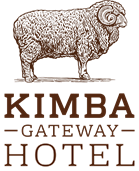 28.3 Accomodation in Kimba
28.3 Accomodation in Kimba
For those people coming from the West of Australia the DLRA recommends the Kimba Gateway Hotel, 40 High Street Kimba, Postal: PO Box 42, Kimba SA 5641, Phone: (08) 8627 2888 Fax: (08) 8627 2310, Web: www.kimbahotel.com.au
They are also very happy to offer discounts for groups or singles for accommodation – you just need to mention that they are with the Dry Lakes group.
Kimba is just 120 kilometres, but about 4 hours drive to the lake.
29. IMAGE RIGHTS
All persons participating in DLRA events acknowledges that by participating in the events, they authorised the Organiser (Dry Lakes Racers Australia Inc.) and its legal agents to reproduce and represent, without any form of remuneration whatsoever, their names, voices, pictures, biography, and more generally their sporting participation in the context of Speed Week, and likewise the brand(s) of their bike/car parts and bike/car manufacturers and sponsors, in any form, on any existing or future medium, in any format, for any publicity to the public worldwide, for any use, including for advertising and/or commercial purposes.
30. USE OF THE ‘DLRA’ or 'SPEED WEEK' LOGO BY COMPETITORS AND THEIR SPONSORS.
Dry Lakes Racers Australia Inc. holds the exclusive rights to use the ‘DLRA’ branding. It is expressly forbidden to use the logo:
- On any submission to seek financial and/or institutional partners.
- On any press presentation material featuring the Competitor or Sponsor.
- On any video medium.
- It may not at any time be associated directly or indirectly with any commercial or institutional branding.
- It is strictly prohibited to sell or distribute products partly or wholly bearing the DLRA or Speed Week branding.
- On the Driver’s/rider’s apparel, helmet, and race vehicle.
31. MEDIA OBLIGATIONS
All Drivers/crews participating in the DLRA Speed Week undertake to make themselves available to participate upon request in:
- Any press conference during the Event,
- Any other media-related event prior to, during, and after the Event.
In entering the DLRA Speed Week, Entrants agree to assist the DLRA in the promotion of the event and in particular, any television broadcast and social media production.
By entering the DLRA Speed Week, the Entrant agrees to relinquish any claim or right to any images or vision recorded for broadcast or social media production, or any other material related to that broadcast or social media production.
Any filming or any other means of recording images or vision for commercial purposes at Speed Week by any Entrant is strictly forbidden unless they have the prior written permission of the DLRA.
The DLRA may provide In-Car camera’s to be fitted to selected cars during an event. Entrants must provide access to any DLRA appointed technician, to install and service the camera and associated equipment.
 WrightsAir will be again conducting commuter , joy and charter flights and landing at the lake again in 2019. More information available on the WrightsAir page.
WrightsAir will be again conducting commuter , joy and charter flights and landing at the lake again in 2019. More information available on the WrightsAir page.
Learn More...
Entrant Information
- Competitor Check List
- Entry Form
- Online Booking
- Volunteers Register
- Fuel Storage Register
- Technical Inspection
- B-1 Car Inspection & Classification Form
- B-2 Motorcycle Inspection & Classification Form
- Race Car Engineering
- Rulebook
- Guidelines for Vehicle Numbering
- Membership Form
- Cleaning your Vehicle
- Frequently Asked Questions
New Entrants
Additional Recommended Reading
- Track Layout
- Starters Instructions
- Push Cars
- How to get to Lake Gairdner
- Lake Gairdner
- What to take
- Club Rules
- Dehydration
Support the DLRA
- Promote your business by advertizing in the DLRA Newsletter
- Sponsors Information
